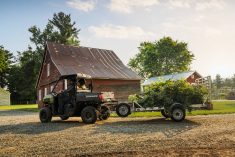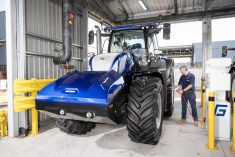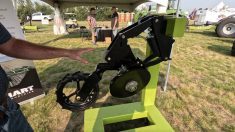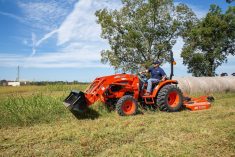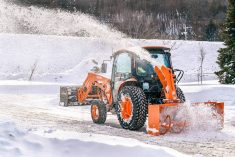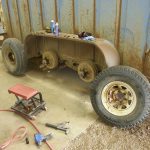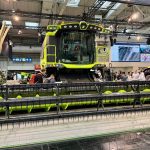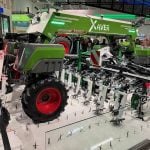This expert believes most farmers are overlooking key considerations when it comes to combine adjustment and operation
If you hired a custom harvester and saw him travelling at eight miles per hour across your canola field while threshing, would you race out there and throw yourself in front of the combine to stop him? I suspect many farmers would. But if you hired Martin Reichelt that’s exactly what you’d see. And he says his combine would blow less grain out the back than any slow-moving machine.
If you think that goes against everything you know about combine operation, you aren’t alone. Every farmer attending a seminar held in March near Assiniboia, Saskatchewan, felt the same way. Reichelt, who operates his own harvest consulting firm based in Germany (see his website,where are yu? www.power-harvesting.com), was there to pass on his knowledge of combine operation. He has been involved with combines for decades and now travels around the world teaching farmers how to adjust and operate their machines.
Read Also
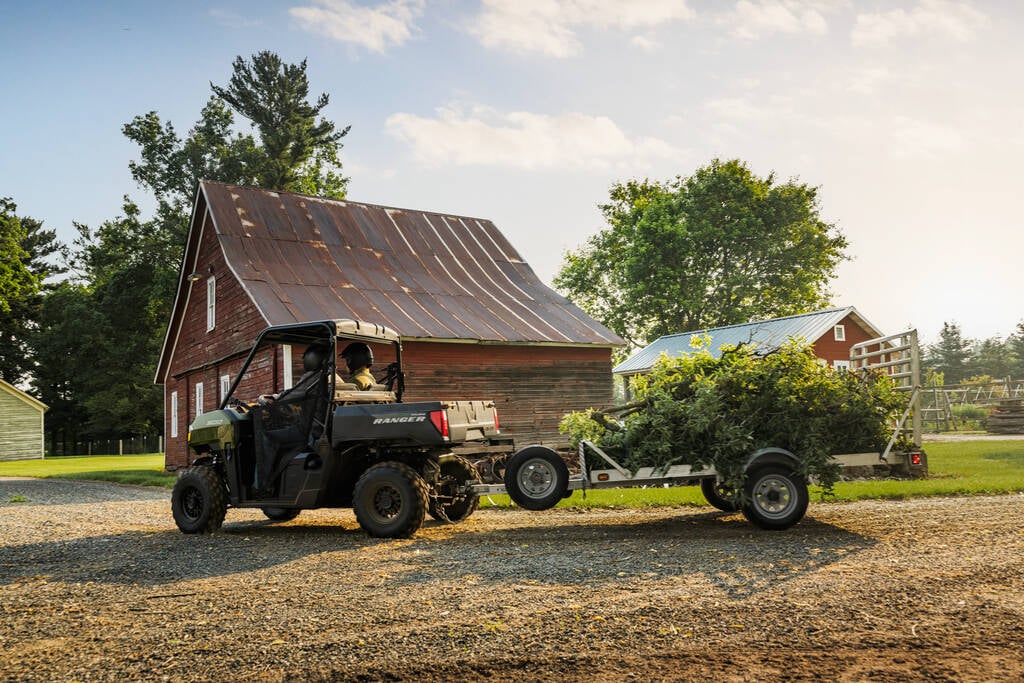
Polaris’ new Ranger 500 aims for simple, affordable
Farmers seeking a smaller, simpler, lower-priced utility vehicle for quick trips to the field or around the farmyard get a new option in Polaris’ Ranger 500 side-by-side UTV, Scott Garvey reports.
Although most farmers have spent hundreds of hours operating or working on their combines, Reichelt believes most don’t fully understand the impact each component has on a machine’s overall performance. “That’s the main problem,” he says. And that applies to farmers all the way from Russia to Canada.
Reichelt says farmers can see very significant efficiency gains and cover a lot more acres with their combines if they follow his advice. To demonstrate just how big those gains could be, he talked about his attempt to set a world record in the amount of wheat harvested in 24 hours with one machine.
“Harvesting 29.5 tonnes (1,084 bushels) per hour of wheat is normal in Germany for the big combines,” he says. “But for the world record (attempt) we did 79.3 tonnes (2,913 bu.). That’s 300 per cent more capacity.” Reichelt was on pace to blow the old record out the water, but the crew breezed through all the available fields in only seven hours.
No Swathing
Reichelt says the first step to good combine operation is keeping the swather out of the field.
“Everyone thinks the machine should be able to harvest everything,” he says. “But it can’t compensate for bad agriculture (problems created when grain lays in swaths). So (in a swath) we have a complete mixed situation, wet and dry, both. But the machine can only be adjusted for wet or dry, not both. With the (straight-cut) header we have much more capacity than with a swather.”
And Reichelt believes expanding straight cutting to canola crops is a practical alternative for most areas of the prairies.
“We made tests last year in the Fort Vermillion area with Canola. The (canola) association found 33 per cent more losses with swathing. And there were six times more green kernels in swaths than with straight-cut headers. In other areas I’m sure we can find a way for straight-cut (combining) as well.”
Making adjustments
Many farmers think only of concave and sieve adjustments when setting combines, but that’s a major misunderstanding, according the Reichelt. “Everyone tries to fix mistakes with the sieves,” he says “But the reason the machine has losses is not the sieve. You must look at the front of the machine first.”
Reichelt says farmers need to start making adjustments at the header. “First I look at which grain I must harvest. Then, how wet is the straw. Then I look at how heavy (the crop stand is). Then I optimize the machine.”
That optimizing begins by ensuring the header is feeding crop in evenly and in the right orientation. He says his experience shows draper headers are much less capable of doing that than auger versions, which should rotate at about 290 RPM. He says draper headers often don’t feed all the crop in head first. That creates threshing problems and begins breaking up straw long before the crop gets into the rotor.
Reichelt says the rotating speed of each successive mechanism should be slightly higher than the previous one all the way through the combine. The feeder chain needs to rotate about 100 RPM faster than the header auger. “We stretch the material out and make it flatter and thinner,” he explains. “If the speed of the feeder house is too slow, it jams up and makes short straw. (On) some combines you can reduce feeder house speed. That’s a mistake. Never do it.”
And the feeder chain clearance above the floor must be adjusted for the kind of crop being harvested. For wheat, he allows the first bar to have a 20 millimeter gap. At the third bar in the chain (when counted from the header) there should be only two mm of clearance, and he says both sides of the chain need to be exactly the same.
Incorrect clearance adjustments here can cause kernel shattering before threshing actually begins, which farmers often attribute to excessive rotor speed. “You find broken kernels in the edges (of the feeder house) and you’re wondering how they came from the threshing area back here,” he says.
But when students hear what concave setting he recommends, they get the biggest shock of the whole seminar. His recommendation: wide open! And the way you make that work is by putting the largest possible header on the machine and going fast. That keeps a full flow of material through the threshing mechanism and greatly improves the combine’s efficiency.
“Can you run it (a combine) too fast?” asked one farmer. “No,” replied Reichelt. “But you can drive too slow.” He adds running out of engine horsepower, not overfeeding the threshing body, is what currently prevents most combines from exceeding their capacity when properly operated.
“For me the border (limit) is the engine,” he says. And he cites an example of how he has helped an Alberta farmer cover far more acres with each combine by following his advice. “Now engine size comes (into play) for him. Before he had always enough engine and had too much losses on the sieves or in the rotor. Now for every combine on this big farm, the border (limit) is the engine (power) after optimization.”
Reichelt not only teaches seminars, like the Assiniboia event sponsored by Flexxifinger, he is also willing to go directly to farms and put his knowledge into practise for individual producers, tailoring the training to their own combines, crops and teaching their employees how to run the machine.
But if a combine’s capacity can be expanded so much using Reichelt’s recommendations, why aren’t manufacturers’ reps teaching all this to farmers to promote the efficiency of their machines? Reichelt has a theory on that. “I don’t want to sell a combine to you,” he says. He points to his 300 per cent increase in combine capacity during his world record attempt. If every combine’s output was tripled, he believes manufacturers would sell a lot fewer machines. †



